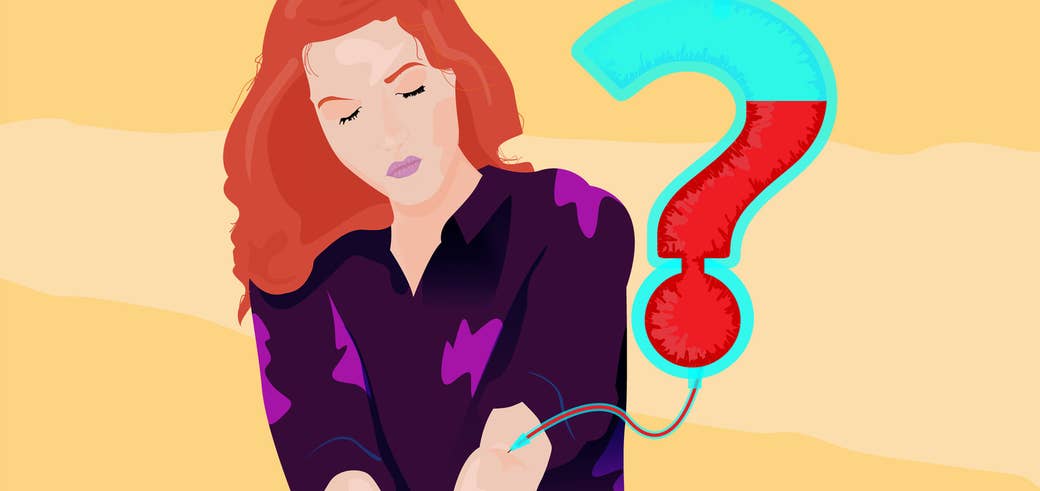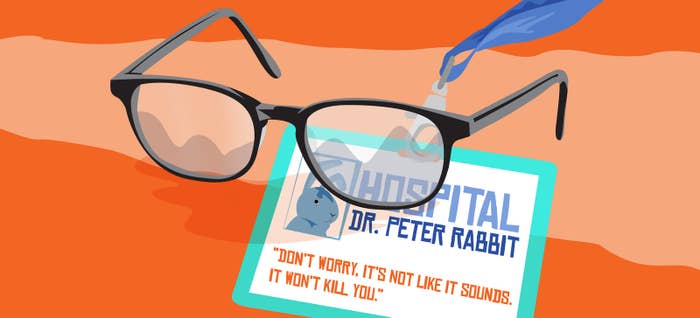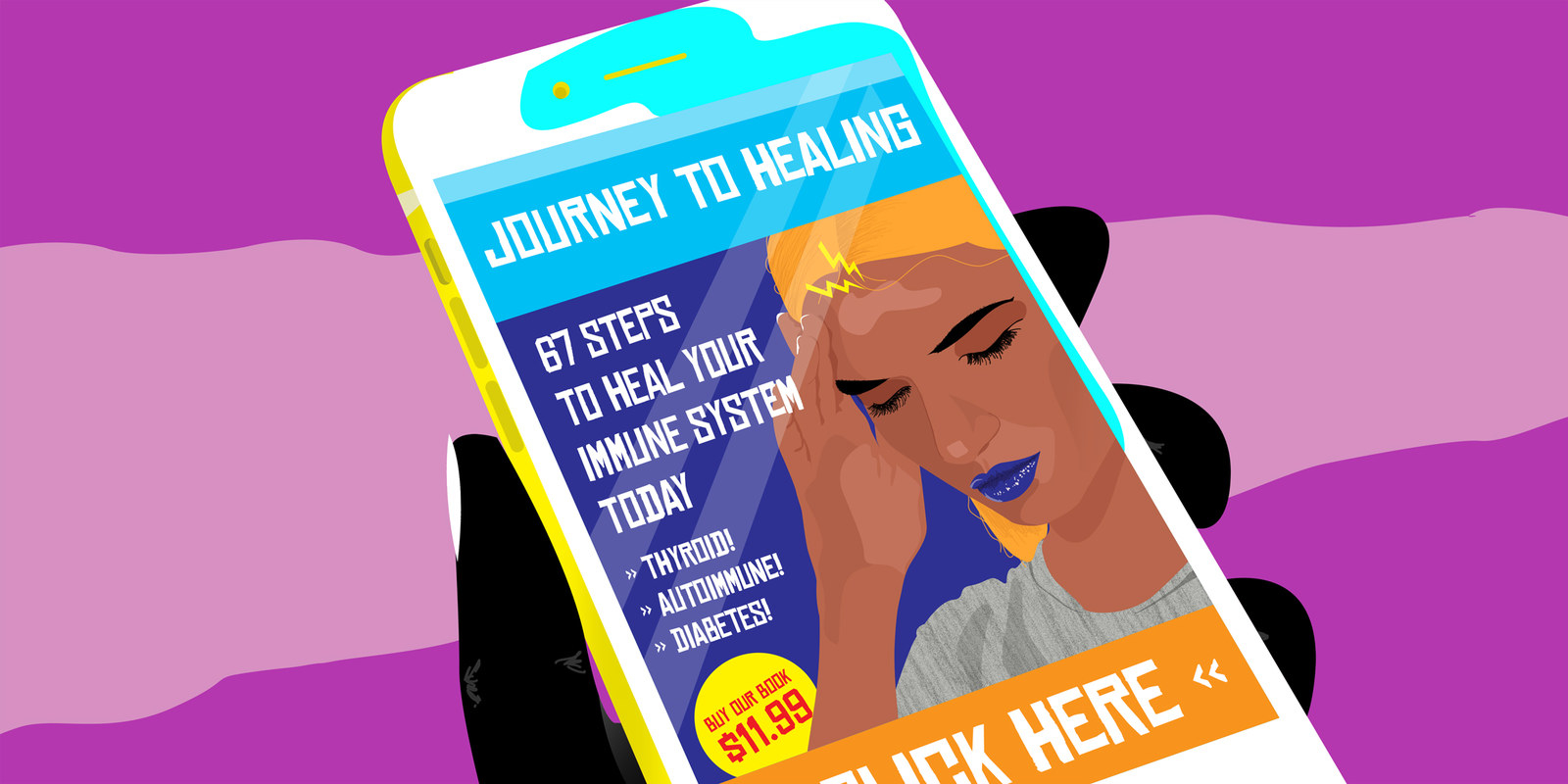
It was a sweaty morning in the last days of August 2014 and I waited, twitching, on an endocrinologist's exam table. There was a pop! in my right elbow, so that half of my torso twisted forward at its own impulse. It’d gotten to the point where I had trouble staying seated at work. The overhead lighting, the rise and flow of chatter, the hurried thud of boots on uneven floorboards — I could feel the sensations in my teeth. I hated the way laughter broke out unexpectedly. I hated that I could feel it buzz behind my eyes after it had stopped. I hated that I needed quiet darkness to breathe, and that I didn’t understand why.
"An odd pain" is what I wrote on the clipboard under “Reason for your visit to the doctor today.” Simple enough. A few weeks earlier, an ache had appeared in the middle of my skull, spread out against the backs of my eye sockets and hadn’t left. It felt vaguely strange to blink, like there wasn’t enough cord slack to lower the blinds. What’s this thing doing behind my face? I wondered.
“When did these symptoms start?” asked the nurse. She didn’t seem impressed.
“Well,” I started. “It’s weird. One night, maybe three or four weeks ago, I just never went to sleep.” I described how I was wired at work the next day, but not drowsy. At some point following the insomnia I noticed my heartbeat and couldn’t un-notice it again. It pounded day and night — my body’s version of the neighbor’s television, thumping through the wall.
“But I haven’t felt well for a while — it’s just this weird twitch thing has come on and now I feel like I’m angry all the time.” Actually, what I felt was bloody, murderous rage, ready to unleash itself at a moment’s notice, or on an unsuspecting subway performance artist violating my perception of acceptable volume.
“Anything else?”
It had become uncomfortable to make eye contact with people, so I moved about in a squinty, half-lidded stupor. The nurse typed, and I hunched over and let my focus rest on the floor. Damp spots appeared on the chest of my paper gown.
She took my blood pressure and I considered asking her if she knew what was wrong with me, if maybe it was obvious. Maybe I really have gone insane. Maybe I don’t have to go back to work.
The doctor breezed in and got right to it.
"You have Grave's disease."
Blink.
“OK.”
“It’s not like it sounds. It won’t kill you.”
OK!
He was small and thin, with a kind face and a slightly oversized lab coat. He blinked at me and I thought, Peter Rabbit!

This wasn't the first time I'd received an anticlimactic prognosis. A few years earlier, I had seen a different doctor about the Terrible Feeling I experienced sometimes. It would happen mid-email at work, letters on the screen that blurred and didn’t clear when I blinked. An overpowering clamminess would take over and the thing I needed more than anything in life was sugary liquid, poured down my throat in huge, gulping bursts.
Labs were run and I received a phone call. Nothing was imminently wrong, but it was possible, that doctor said, that at some point in life I could develop a thyroid problem, one where my thyroid levels were too high. It was also possible something might be off with my blood sugar, but I didn’t fit the profile for type 2 diabetes, and it would be very unusual to contract type 1, or autoimmune diabetes, at my age.
But this time, my "thing" had a name. Grave’s disease is strange. It's an autoimmune disease of too much thyroid hormone in too small a space. The body responds in confusion with antibodies that attack thyroid production, and the thyroid gland can no longer regulate what’s happening. Its origins are vague. Sitting in Dr. Rabbit’s office that August morning, the inconclusive phone call from years prior felt prophetic. Here I was, gowned and with a thyroid problem, just as the other doctor thought I might be.
I had more questions. I wanted us to go through and write all the answers down, one at a time.
“Is this the reason I’ve been having all these weird things for so long?” I asked the kindly eared doctor.
“It’s possible,” he answered.
I shuffled around the room picking up my things while he wrote out two prescriptions, one to lower the production of my thyroid, and the other to slow my heart rate.
I held the pieces of paper in one hand and lifted the other to Dr. Rabbit, as though I were going to high-five him. “So this will fix it?” He smiled with his mouth shut and opened the door. For a moment, I was aware of how I looked — a sweaty, anxious patient who’d darted into a medical office after weeks of alternating melancholy and mania. I was someone who’d been given enough of an answer, and now it was time for me to go.
“You’ll notice a change in two weeks,” he said, and then he was gone.
“A change in what?” I thought. My health? My heart? The insanity I’d carted along sidewalks and into doctor’s offices for the past several weeks, talking quietly to myself in public bathrooms, saying out loud, “This will go away?”
I dutifully swallowed my two little pills at noon each day, and each time I pulled the bottle out of my purse, I felt a pang of something like relief. There is a name for this, I’d think, as I unscrewed the cap. And I am taking care of it, as I swigged from a water bottle. This was why I had a sweaty chest. It’s why I felt nervous and sad and intolerant of the heat. It explained the heart palpitations, the weight loss, and the inexplicable vision changes I had playing tennis. If I ran too quickly after a ball, if I were on one side of the court looking over, I saw the other players move after they really did. My lens was out of focus, and I swung at balls while they were still feet away.
“You’re so lucky!” people said when I told them about my new diagnosis. “They figured out what was wrong and were able to fix it. You’re going to feel so much better!” I smiled and nodded and said things like “Yeah, what a relief,” partly because they were true, but mostly because there was nothing else to say.
I thought that if I could just get through to the part where it all made sense, the part where the fatigue and irritation cleared away, then I would be lucky. Grave’s wasn’t going to kill me. Nothing was going to rot or fall off. My immune system was a little jumpy, a little overreactive, but manageable overall.
I limped along toward that threshold for 18 months. The anti-thyroid medication settled things down to where I only had to take one pill, instead of two, and I eased off heart meds entirely.
The occasional kind listener suggested support groups as a place to air my grievances. I couldn’t do it. I wanted to complain to people who loved me, and then pretend like everything was fine. I didn’t feel sick enough to find solace discussing rashes and chronic diarrhea with strangers. I didn’t look sick enough to feel comfortable using the word “disease.”
It’s not that I wanted something more grim to be the matter — it’s that Grave’s felt like such a mediocre excuse to be feeling as poorly as I did. The diagnosis simply didn’t come with enough meat on its bones to feed a larger purpose. It was just a disappointment, not a tragedy. Like bad teeth, or The Life of Pablo.
At some point, I decided that if I couldn’t feel well all the time, then I would nail down precisely what had caused my unwellness to begin with. If the diagnosis was the end, I wanted the beginning. So, I began to google — first casually, then pathologically. I skimmed listlessly for hours, entranced by possibility after possibility. Every patch of inflamed skin or stomach cramp, every joint ache, every muscle twitch, every canceled plan for exhaustion, I could stitch them together. I could make them fit a narrative. The antibiotics I took for ear infections as a child. The gluten in my diet. The leakage of nutrients from my guts. The intestinal parasite I’d picked up during foreign travel.
There had to be a reason this had happened, something to explain what went wrong and a perfectly calculated combination of diet, exercise, willpower, and drugs to fix it. I was going to find it, and never feel unwell again. I stood in bookstores in front of all the sections that promised to heal X by doing Y. The only thing I couldn't see was the reason for the condition I had, and the answer was there was no answer.

In the early spring of 2016, a few days before a doctor called to say I had diabetes, I wet the bed. The warm pooling of urine woke me up and I paused for a moment, before I reached for a glass of water. I was so thirsty. I pulled the sheets off, left them in a pile on the floor, and went back to sleep on the mattress.
What I had — and what I had had, for years, the doctor told me — was latent autoimmune diabetes in adults (LADA), a slow-progressing, later-in-life form of type 1 diabetes. Origins unknown.
The months that followed passed in fits and pauses. One of my fingers was always bleeding. I left dried brown spots on my keyboard, the bathroom light switch, my sweaters. I discovered I’d turned the dial on the needle in my blood glucose machine too high, and it went too deeply into my finger pad with each stick. Little sores piled up from insulin injections. I learned to poke my right finger, to give my left fingertips a break. I went off gluten. I stopped drinking. I went to therapy. I took leave from work. I had a new diagnosis, but where was the goddamn answer?
In the sixth grade, I once waited in the Florida sun to be picked up from school. No one came. I walked home to an empty house. Hours later, two police officers rang the doorbell and asked if I knew where my mother was. I did not. That afternoon, a plane had crashed, and the crash had killed my father. Life was different, after that, and there was something clear to point to when I needed an answer. What I felt now, this tedious blend of common-sounding things — fatigue, anxiety, nausea — was not that kind of interruption. It was not that kind of pinpointed loss. It simply dragged on.
By Thanksgiving 2016 I was averaging two nights a week prostrate on the floor, drooling from a blood-sugar crash, and I begrudgingly decided to begin life with an insulin pump. They had decreased in bulk and absurdity since the early aughts, and while my pump required use of a pager akin to Dr. Mark Green, it also meant there were stretches of time throughout the day when I could put aside the business of figuring out this whole diabetes thing and focus on something else.
“I feel so much better,” I said, and meant it.
There wasn’t a day when I’d completed treatment, or received a breathless phone call from the doctor’s office to say that my labs were in and I was clear. There wasn’t a marathon finish line crossing, but there was a slow, unsteady, boring reconfiguration of what it meant to do the things I needed to do every single day.
I read obsessively into the lives of athletes who lived in near-constant pain because of their craft, their art, and I cried, embarrassed, over the indignity in having something so unglamorous as the root of my ills. All bodies shut down, eventually. Mine had started early, but there was no great battle. I didn’t fight, then win. What I did do in painfully slow order was accept that the inner workings of the body would not be dictated on my complete terms. The thing that had operated automatically, effortlessly, for most of my life now required clunky manual interventions — insulin injections, antithyroid agents — without a full satisfaction guarantee.
I still take to the internet in occasional fits of panic. I still look for clues to explain how I got sick and how to never, ever feel unwell again. I still wish for complete, totalitarian certainty.
I've found none of those things.
Instead, what I have is a more complete perspective on what it’s like to feel good, and what it’s like when there’s kind of something wrong with you, but also, you’re OK. Glorious, even.
